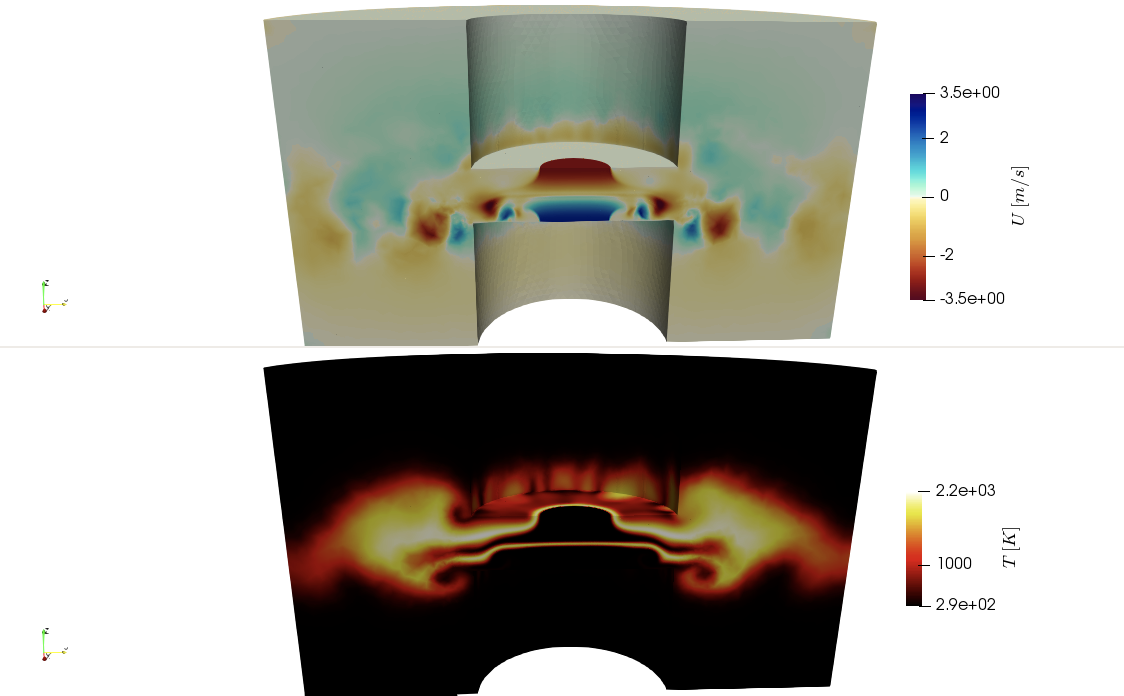
The need for decarbonisation in aero-engines boosted the creation of the ESTiMatE project, a consortium that groups seven public leading institutions in the field of combustion from Europe with Rolls Royce as topic manager to understand in depth the prediction of soot in very high by-pass ratio aero-engines. One of the most outstanding characteristics of this project is its multidisciplinary approach to the problem since it integrates all the elements required to understand the process of soot formation and particle transport: generation of the chemical mechanism for a jet-A1 surrogate including aromatics performed by the Universität Stuttgart (IVLR), production of experimental data for laminar and turbulent flames by the Karlsruher Institut für Technologie (KIT) and the Technische Universität Berlin (TUB), implementation and application of soot models coupled to advanced turbulent combustion models performed by the Technische Universiteit Eindhoven (TUE), the Technische Universität Darmstadt (TUD) and the Barcelona Supercomputing Centre (BSC), and finally, understanding of the break-up process of the injected liquid fuel by the Universitat Politècnica de València (UPV).
Currently starting its third year, many stages have been covered in the project including the elaboration of the chemical mechanisms, the realisation of the measurements and the implementation of the models, being now in the position of carrying out the CFD (Computational Fluid Dynamics) simulations. For this purpose, Large Eddy Simulations will be performed, on the one hand, with the flamelet model based on the Flamelet Generated Manifold (FGM) and, on the other hand, with the Conditional Moment Closure (CMC), combustion models coupled to the Method of Moments and the Discrete Sectional Method for the soot modelling. The consortium was granted with a PRACE (Partnership for Advanced Computing in Europe) project “Soot-AERO - Numerical investigation of soot formation from oxidation to particle size distributions in aero-engine combustors” ID2021240106 with a total of 72 million CPU hours in the supercomputer HAWK from the High-Performance Computing Center of the University of Stuttgart (HLRS). This PRACE project will allow to simulate, with the aforementioned models, a turbulent counterflow diffusion flame and a swirl stabilized combustor, both experiments measured at TUB.
Such experiments will provide very valuable information about the soot formation and concentration along the flame. To characterise the flame PIV (Particle Image Velocimetry), OH* chemiluminescence and LII (Laser-Induce Incandescence) for soot measuring have been be used. Moreover, a surrogate for jet-A1 is injected into the swirl stabilised combustor to validate the break-up model developed in the project. Some preliminary results for CFD simulations performed by BSC are shown in the figure.


In the next months an intensive work will be done to simulate these experiments. The wide spectrum of models used for this purpose are expected to lead to the understanding of soot formation, fulfill the objectives targeted in the ESTiMatE project and develop new computational models that can be used for the decarbonisation of current aeroengine technologies.
